"DA DOVE VIENI? TERRAFERMA, TERRACHIUSA". REFLECT TO SIDING

Photo Source: Antonino Rampulla
In his touching monologue, the talented Igiebor Eseosa tells of an evening, an evening in any one of the many Libyan concentration camps where migrants are forced to live crammed like animals, waiting uncertain and indeterminate of their turn for the crossing of the Mediterranean. Some jailers enter the warehouse to snatch a six-year-old girl from the arms of a desperate mother who begs them to have mercy. The girl is raped by the inhuman herd all night long. It is then rejected in the arms of the mother, unconscious, bleeding and swollen.
The "dose" has risen from the story of a woman who has died in the birth of a child with his son almost born, complaining of labor, simply annoyed his tormentors.
From father and husband, in hindsight, I could also have preferred an energetic and well-balanced fist in the belly listening to the
reports of the daily atrocities in the Libyan concentration camps . An account is to read them in the many articles on the net. Another thing is to listen to them from the words of a spontaneous Igiebor Eseosa, in which the absence of theatrical artifices in his way of acting and, probably, the experience of a lived not less dramatic, have amplified their authenticity.
 Da Dove vieni? Terraferma, terrachiusa
Da Dove vieni? Terraferma, terrachiusa is a theatrical representation, to which I had the pleasure of assisting (if this expression is appropriate in this regard) within the review
New air in ME , which slams bare and raw facts in the face of the spectator, stories of ordinary madness suffered by those fleeing from an unsustainable situation (whether war or absence of minimum conditions to live in dignity, it does not matter) ending up in the hands of unscrupulous torturers.
Actor Thilina Pietro Feminò is giant. Simulating a realistic African French accent and the resigned cynicism of those who daily witnessed too many atrocities, tells, among other events, how to drive away boredom some jailers released groups of migrants inciting them to escape, in order to use them as targets of their amused rifle shots.
In the development of the theatrical narration, Giampiero Cicciò and Maurizio Marchetti implicitly seem to indicate to the viewer the hermeneutical key to coherently frame all the scenes and video contributions used: the knowledge, the recognition as human beings, the meeting between people, cancels the mistrust and reactivate empathy. However, my impression is that the great disruptive force of the nihilism of the Libyan facts narrated, relegates everything that stands between the monologue of Igiebor Eseosa and the final one of Thilina Pietro Feminò, to the role of a weak corollary. In other words, one gets the impression that the Libyan assassins do not give up anything that, for example, we are all genetically a big family: so with these people, who have no mercy even a baby, where to start talking?
 Da dove vieni? Terraferma, terrachiusa
Da dove vieni? Terraferma, terrachiusa underlies a
criticism of international agreements stipulated for the "control" of migratory flows: in exchange for means, training and money from the European Union (and in particular the Government Italian), the Libyan Government promised to cooperate. This collaboration is in fact translated into the reduction of departures (with the consequent extension of the ordeal of migrants held in the camps), in bringing back the intercepted boats (and therefore the migrants in the camps), turning a blind eye to the inhumane management of concentration camps, on the trafficking of migrants as slaves, on extortions and blackmailing families of origin. Is it therefore surprising that the Libyan Coast Guard has sometimes deliberately left the migrants drowned in the sea and hindered the attempts to rescue ships from non-governmental organizations, even by ramming them?
Davide Liotta, patron of the review, rhetorically asks how it is possible that values today taken for granted, are in fact questioned.
What barbarism in the last century was not enough to prevent the reconsideration of inhumane practices and ideologies? Unfortunately today the reflections on the "banality of evil" by Hannah Arentd come back, impressed by the total dereliverization of the Nazi subordinates with respect to the uncritical execution of orders to systematically exterminate an entire people, as if they were not people, as if they were simple objects to be discarded. Today also the famous verses of Primo Levi are returning, referring to the way in which Jews were treated in the Nazi concentration camps, posed a rhetorical doubt that they were considered human beings by their persecutors.
The suspicion is that these reflections have unfortunately never ceased to be current.

If in a Libyan concentration camps even a child does not inspire compassion, it is not considered a person but something to dispose of, without too much trouble undoing, if politics and public opinion are aware of it but "Africans are still their home! ", means that the risk of going beyond that point of no return that in the twentieth century led to the rise of abominable ideologies is real. Turn the other way, pretend not to know, bask in the warmth of our reassuring community in which to continue to feel good anyway, be it the parish in which the "neighbor" is only white and with a family accent, be it the political party in which disguise malice and selfishness with a hypocritical need for greater security does not change the reality of being progressively renouncing to pieces of humanity. If we want to start reversing the course, we need to start demanding that European governments are not complicit, either direct or indirect, of carnage and atrocity. It is necessary to begin to recognize, take seriously and oppose the return of racist policies and ideologies.
Deep reflection is needed to achieve a clear position.
So thanks to Giampiero Cicciò and Maurizio Marchetti for having conceived
Where are you from? Terraferma, terrachiusa , to the master Giovanni Renzo for the apt soundtrack played masterfully live, to Lelio Bonaccorso for lending his pencil to the poster, to Davide Liotta for the sensitivity in welcoming the review "Aria new in ME "a show so" politically incorrect "and to all the people who allowed its staging.
Text Source: Antonino Rampulla
ARCHIVE NEWS
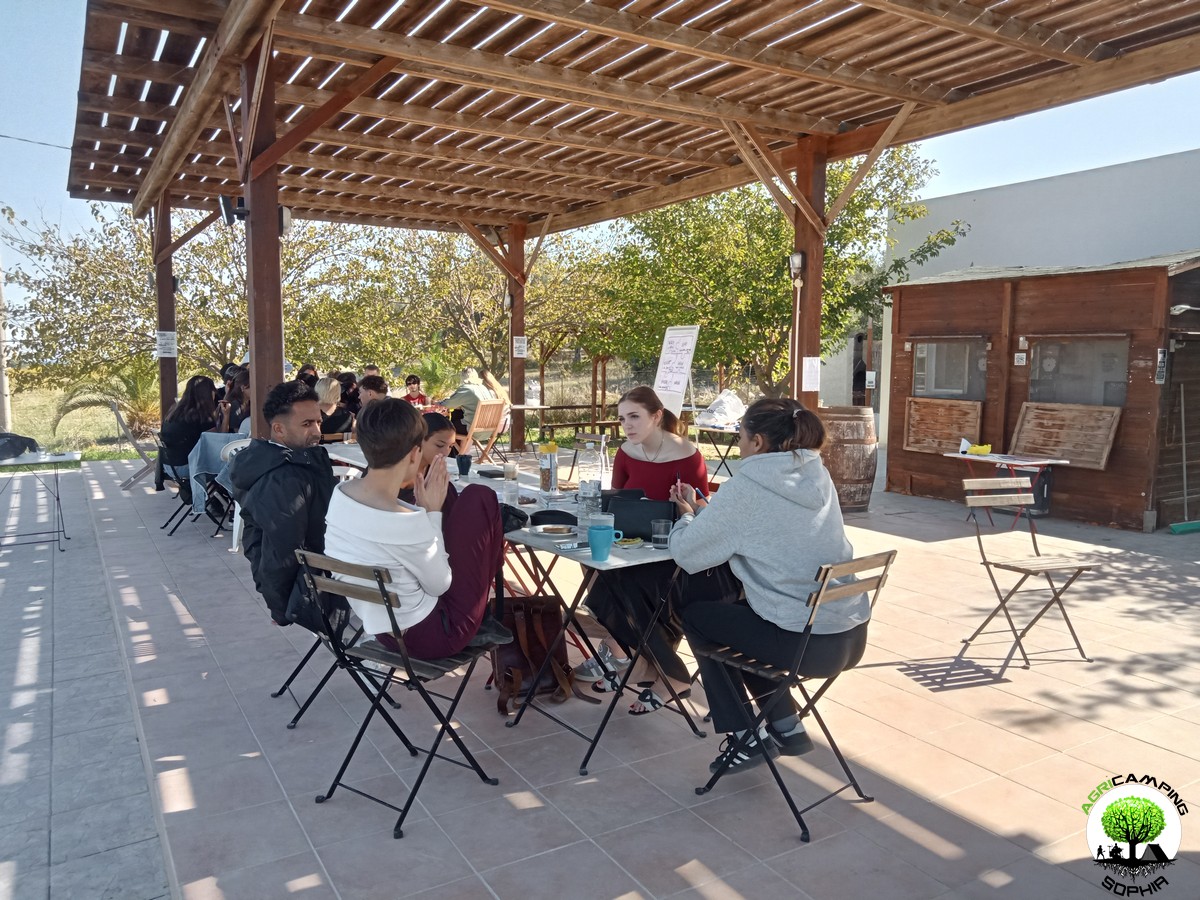 DO YOU WANT TO ORGANIZE AN ERASMUS AT AGRICAMPING SOPHIA?
DO YOU WANT TO ORGANIZE AN ERASMUS AT AGRICAMPING SOPHIA?
WHAT IS AGRICAMPING SOPHIA?
It is a campsite with tent pitches, glamping tents, mobile homes and bungalows
WHERE IS IT?
In Italy, in Sicily, near Syracuse, in Pachino: 36.736883, 15.095610
HOW TO CONTACT US?
info@agricampingsophia.it
(SPEAK ENGLISH) +39 3473079242 – (ONLY SPEAK ITALIAN) +39 3452396095
WHAT DO WE OFFER?
We offer hospitality and catering for Erasmus projects
FOR HOW MANY PEOPLE?
We can have 4-7 single beds in the Socrate Bungalow, 6-10 single beds in the Platone Mobile Homes, 4-6 single beds in the Aristotele Mobile Homes, 4 single beds in the Iblone Mobile Homes, 4 single beds in the single beds in the Empedocle Glamping Tents. In total we therefore have 18 comfortable single places or 31 single places with a fair spirit of adaptation.
IN WHICH PERIOD CAN AGRICAMPING SOPHIA BE AVAILABLE?
The most suitable periods to use our services...
 CART RUTS MODELED ON SOFT ROCK?
CART RUTS MODELED ON SOFT ROCK?
Read also RACK OR HOUSING FOR CLOGS?
Some cart ruts from the Targia district, in Syracuse, and most of the cart ruts from Granatari Vecchi, in Rosolini, give the impression of having been impressed, modelled, on a rock that was originally viscous, not entirely solid. As absurd as this hypothesis may seem, especially in Granatari Vecchi, the softness of the shapes and the at least anomalous uniformity of the rock bank, as if it were a concrete casting, which hosts the cart ruts, is unicum compared to the lithic context in the area.
In Targia this phenomenon is less impressive but if we consider the cart ruts essentially cart tracks, therefore furrowed roads indirectly resulting from the repeated passage of carts along the same route, we do not understand why such uniformity and smoothness is present, in the majority of cases, also on the parts not affected by the passage of the...
 RACK OR HOUSING FOR CLOGS?
RACK OR HOUSING FOR CLOGS?
Read also CART RUTS CUT FROM QUARRIES
In the presence of slopes, even slight ones, in some cart ruts in the Targia district, in Syracuse, central holes are found with a diameter of between 30 and 50 centimeters and a depth of 15-20 centimeters, spaced about 50 centimeters apart. Neither the position (they are not exactly in the center of the cart ruts and perfectly aligned with each other), nor the shape appear perfectly regular: either the passage of time and any wear have profoundly modified their original shape or, simply, they have never had a systematic regularity. However, the offset in position between one hole and another is never completely “off-axis”: there is always a portion about twenty centimeters wide that coincides with the same portion of the previous and subsequent hole. The best preserved and most defined holes are found in the cart ruts usually called Scala...
 CART RUTS CUT FROM QUARRIES
CART RUTS CUT FROM QUARRIES
Back to CART RUTS AND A FEW TOO MANY PROJECTIONS
I will skip any preamble, referring to what has already been written regarding the presence of cart ruts in south-eastern Sicily.
The easy academic tendency has been, in most cases concerning cart ruts, to consider them in terms of the latomie, or quarries, with which very often (for example in the cases of the Targia or Pizzuta districts) they share the same territory.
According to this theory, the carraie would have been indirectly created due to the wear of the rock at each passage of carts or sleds loaded with extracted stone blocks. I will not repeat the arguments presented so far in order to demonstrate that this is a theory that has little solid foundations on an in-depth analysis of the cart ruts. However, I will add a piece by demonstrating the implausibility of a connection between them in both chronological and functional...
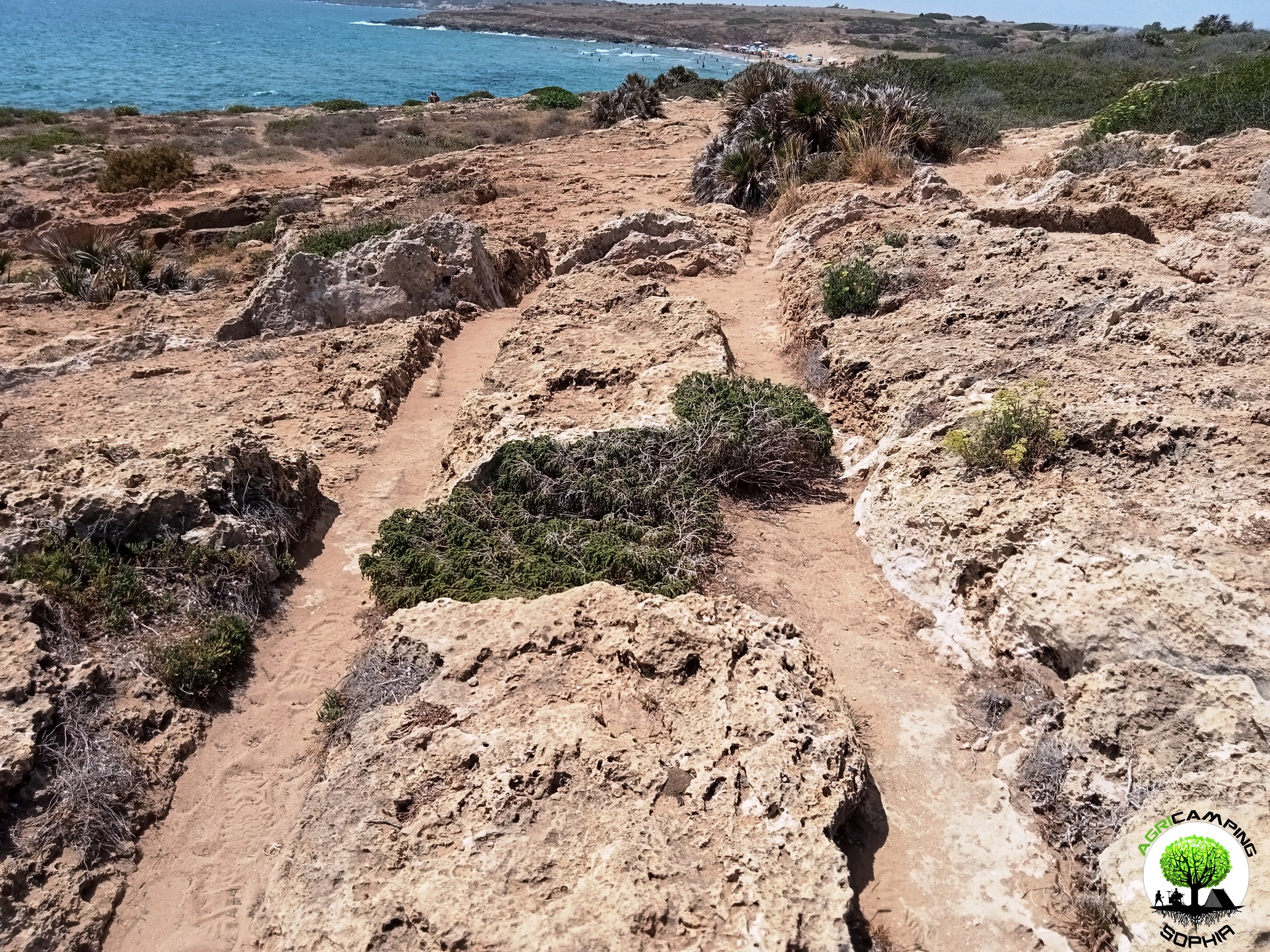 CART RUTS AND A FEW TOO MANY PROJECTIONS
CART RUTS AND A FEW TOO MANY PROJECTIONS
Read also THE POLISHING OF THE CART RUTS
I will skip any preamble, referring to to what has already been written regarding the presence of cart ruts in south-eastern Sicily.Considering the possibility that the cart ruts were gradually dug by the passage of carts pulled by pack animals, for example pairs of oxen, observing certain sections of the cart ruts present in the Granatari Vecchi district, in Rosolini, and in the Pizzuta district, close to the Vendicari Reserve, two questions arise:
1. Why force the animals to pass over rough surfaces and protrusions high, compared to the base of the furrows, even 60-70 centimeters?
2. Why, in the presence of such obstacles, not opt for a detour?
For Mottershead, Pearson and Schaefer such protrusions appeared later, since at the time of the passage of the wagons, a layer of earth covered the rocky bank, thus not making the obstacle...
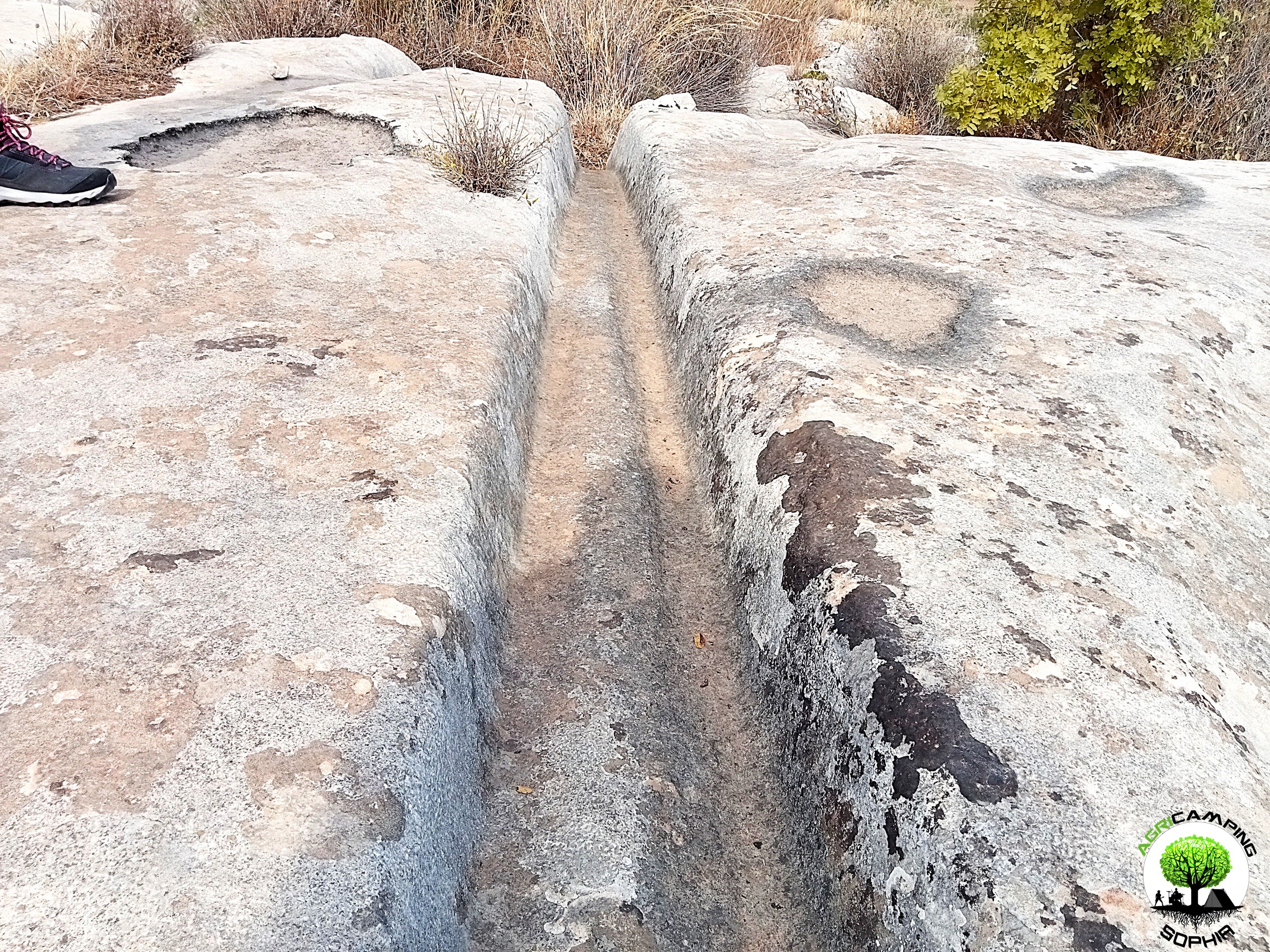 THE POLISHING OF THE CART RUTS
THE POLISHING OF THE CART RUTS
Read also THE PROBLEMATIC EDGES OF THE CART RUTS
I will skip any preamble, referring to to what has already been written regarding the presence of cart ruts in south-eastern Sicily.
To proceed with this comparison I have chosen a probable capital and the corner of a recess present in a block of the northern walls of Eloro that would seem to resemble a pinax, that is, a niche that would have housed a fresco of the heroa, but which a more careful observation refers to a system functional to the grip of the block through a pincer winch. Both elements, like the curt ruts, have remained at the mercy of the elements for millennia, and are therefore subject to comparable wear and tear due to the passage of time. The finishing of the capital should be of a high standard, since it is an architectural element that also has an aesthetic function. The recess, on the other hand, should have...
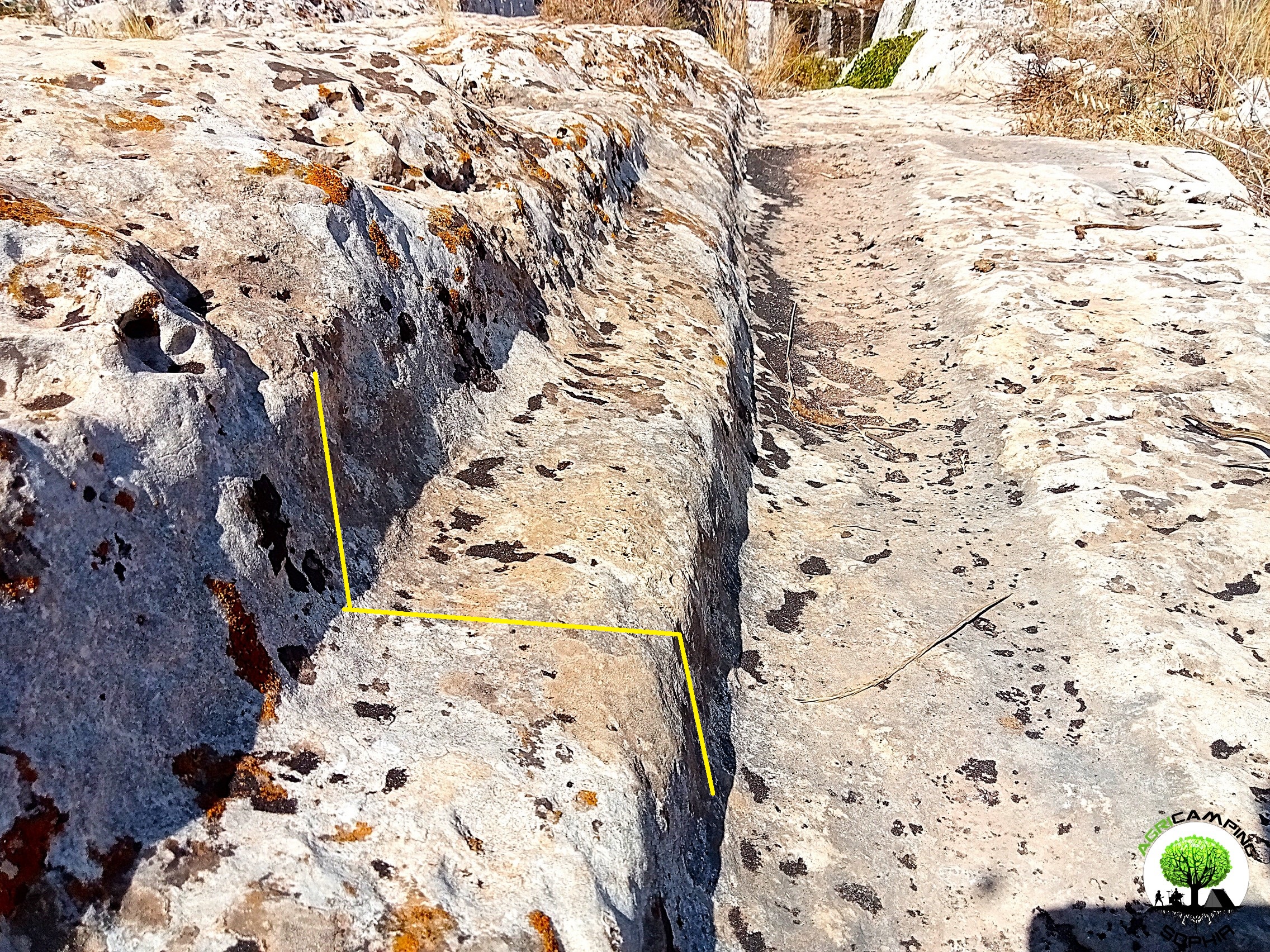 THE PROBLEMATIC EDGES OF THE CART RUTS
THE PROBLEMATIC EDGES OF THE CART RUTS
I will skip any preamble, referring to to what has already been written regarding the presence of cart ruts in south-eastern Sicily.As can be seen in other sites around the world, in some cart ruts I visited, in particular in the Cugni district in Pachino, in the Granati Vecchi district in Rosolini and in the Targia district in Syracuse, a clear border can be seen, a sort of frame, next to the grooves, more marked externally, barely noticeable internally.
The borders I measured have a width of 14-20 centimeters and a height of 8-10 centimeters.
Not all cart ruts have such frames present or particularly evident, regardless of the degree of wear or degradation. They are found above all in cart ruts with less deep grooves.
As already described in detail, given the presence of furrows with a depth of even 65-70 centimeters, the wheels of a possible vehicle would have had to have a...
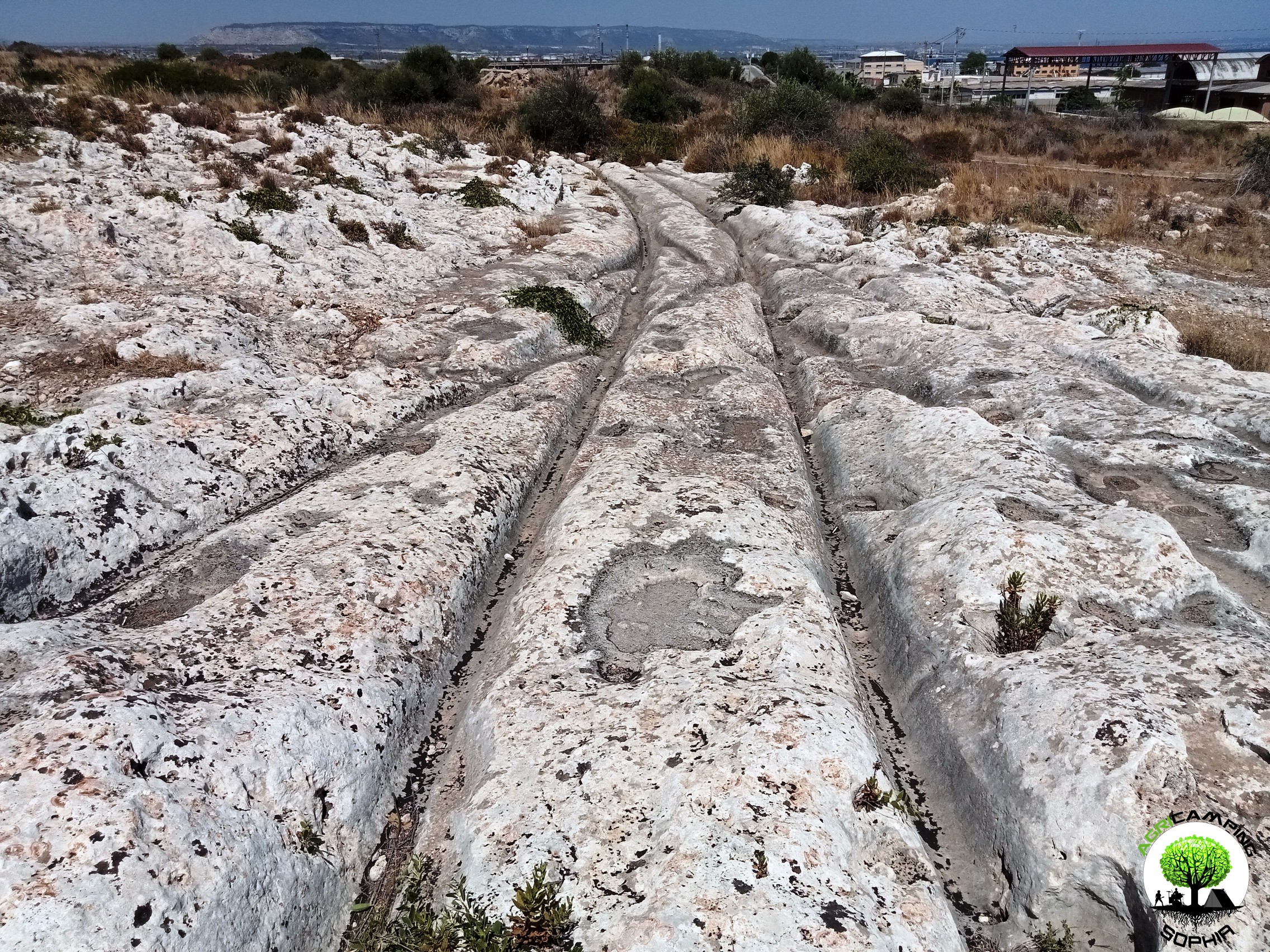 THE PROBLEM OF CART RUTS IN SOUTH-EASTERN SICILY (PART FOUR)
THE PROBLEM OF CART RUTS IN SOUTH-EASTERN SICILY (PART FOUR)
Click here to return to third part
Clapham Junction
As in the Maltese site Misrah Ghar Il-Kbir, also in the Targia and Granatari Vecchi districts the cart ruts intersect and cross each other in a similar way to the track switches in a railway station. The nickname Clapham Junction that was given by David H. Trump to the Maltese site, derives precisely from the similarity with the famous English railway station. For Sagona these are agricultural furrows and water channels, for Mottershead, Pearson and Schaefer these are abandoned paths due to obstacles and wear. Obviously we do not know what the morphology of the Syracuse and Rosolini territory was at times when the cart ruts were traced, but considering the current context, there certainly would have been no agricultural reason to build them, given the presence of fertile land, springs and fresh water courses just a few kilometers...






 DO YOU WANT TO ORGANIZE AN ERASMUS AT AGRICAMPING SOPHIA?
DO YOU WANT TO ORGANIZE AN ERASMUS AT AGRICAMPING SOPHIA? CART RUTS MODELED ON SOFT ROCK?
CART RUTS MODELED ON SOFT ROCK? RACK OR HOUSING FOR CLOGS?
RACK OR HOUSING FOR CLOGS? CART RUTS CUT FROM QUARRIES
CART RUTS CUT FROM QUARRIES CART RUTS AND A FEW TOO MANY PROJECTIONS
CART RUTS AND A FEW TOO MANY PROJECTIONS THE POLISHING OF THE CART RUTS
THE POLISHING OF THE CART RUTS THE PROBLEMATIC EDGES OF THE CART RUTS
THE PROBLEMATIC EDGES OF THE CART RUTS THE PROBLEM OF CART RUTS IN SOUTH-EASTERN SICILY (PART FOUR)
THE PROBLEM OF CART RUTS IN SOUTH-EASTERN SICILY (PART FOUR)